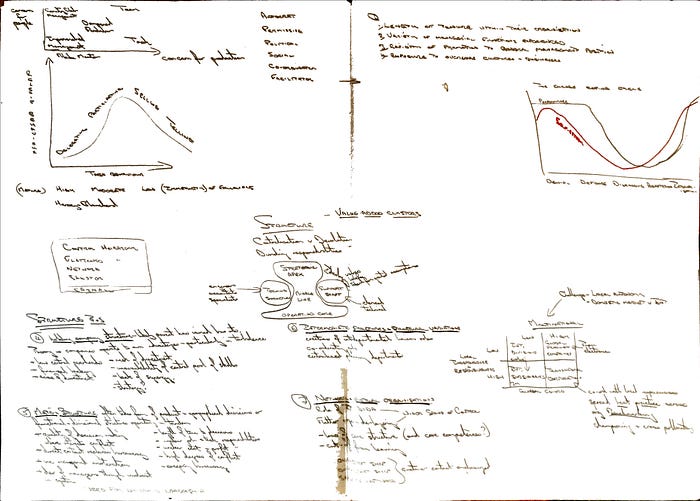Points of inflection — Where to Decide? What to consider.

We all take business decisions daily. Hourly even. How we take these decisions is dependent on the speed required and the seriousness, the impact, of taking the decision.
The term inflection point has appeared in business literature — is your business at an inflection point? For some, the term has come to be used interchangeably with decision points. An inflection point may prompt a decision-making process but it is not the decision making process itself unless you are able to see what is changing and how to frame the decisions change may herald.
So what is the difference between a decision point and points of Inflection.
How do we discern a point of inflection?
What information is required to take a decision?
Inflection point: the point of a curve at which the change in direction occurs. Such curved graphs are the stuff of trends and patterns and, influenced by all factors impacting those trends and patterns.
Are you tracking the important influences? Can you pick the change in direction?
Is your market changing? Are you tracking the change?
New product launch not going according to the plan (as per the decisions)?
Are there changes to the industry you are in? How can you tell the trends and patterns are changing?
New collaborators and competitors? How to track the differences being made?
All revolve around trends and patterns; being able to discern the inflection points whereby we look at decision points.
A decision point, by default, is where you are asked to make decision as to how you, your company, are to move forward. Self-evident but worth differentiating from inflection points where you can go sweetly on — with the changed direction.
Increasingly, decision points go beyond trends and patterns to know factors of disruption where the smooth lines are broken by leaps as market forces, inventions and innovations change the nature of the operating environment. We are, increasingly, being asked to take decisions noting all the possible, probable and even unlikely, inflection points.
What do you need to understand inflection in a business context?
Data is the starting point; although some will contend they still work on ‘gut feel’ and have limited need for data. Data pertaining to your markets, your industry and your products or services is the basis for even those gut feel decision times.
Data alone is not enough. We drown in data every day. How many times have you read an article saying 86% of all mergers and acquisitions do not work? Without qualifying 86% of what sample and what does ‘do not work’ mean on the success continuum — the inflection point along the line dividing unsuccessful from successful?
To make sense of this data you need the skills to distil information from the base data to look at whether the trends are upward or downward where there could be inflection points. Differentiating inflection points from the noise of opinion — inflexion in terms of how data is modulated by opinion?
What do you need for decision making?
Information. Information goes beyond data it is the analysis of data allowing you to make informed decisions balancing the various factors at play in terms of the external and internal factors. The process will follow strategic review, further planned development and the implementation of those plans with the necessary feedback loops for project management course correcting (noting deviations, inflection points) and delivering results to impact on inflection points.
Data:
- Setting up what we need to know about allowing us to see, sense, inflection points
Information:
- Data distilled, analysed and interrogated facilitating…
Decisions:
– informed by quality data analysed to address the needs of the firm
Actions:
– delivering on decisions taken,
- noting new rounds of trends, patterns and disrupters to be tracked, inflection points discerned and the next DIDA
To Follow:
Inflection points, organisation growth: how to identify and develop
Business agility are we or our systems customer centric?
Balanced decision making skills moving your business forward
